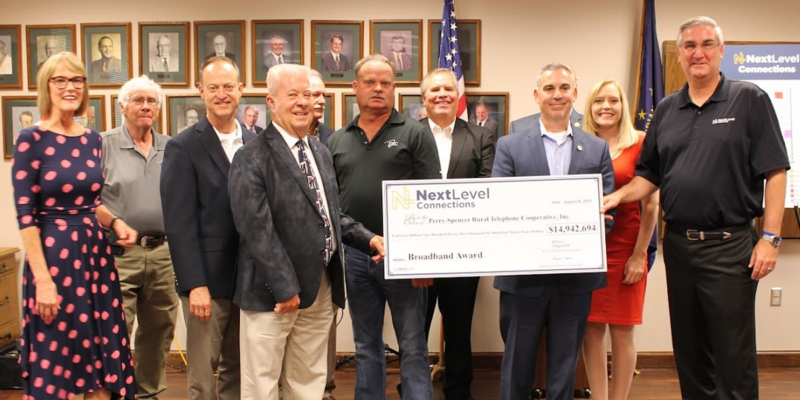Hoosier State Electric, Telco Co-ops Expand Broadband Access

As the quest to bring broadband to rural America has accelerated, its success has increasingly depended on partnerships between cooperatives. Southern Indiana Power joined with Perry-Spencer Rural Telephone Cooperative (PSC) to roll out a fiber-to-the-home (FTTH) project throughout its service area.
“When the expansion of rural broadband discussions were beginning, we knew that our old AT&T territories were going to be left behind,” Southern Indiana Power President and CEO Steve Seibert said. “As an electric co-op, we felt that was not acceptable. We needed to step up to the plate and try to come up with a plan to help deliver a solution for members.”
The electric cooperative did not want to take on the project alone. It needed a partner that already had expertise in bringing broadband to rural homes and businesses.
PSC was an obvious choice. It had already deployed fiber throughout most of its own territory. In addition, about half of Southern’s 10,000 members were served by the telephone cooperative—with many already enjoying high-speed broadband. The remaining members were located outside PSC’s current service area.
“Southern saw what was going on in rural America,” PSC President and CEO James Dauby said. “They knew it was not just businesses that need broadband connection, but it’s also for the quality of life of their members.”
Electric and Telephone Co-ops Leveraged Each Other's Strengths
The two cooperatives have had a long and fruitful working relationship that spanned decades. “There was a lot of familiarity there,” Seibert said. “We had ongoing personal and business relationships with myself and Jim as well as several of our employees and directors. In addition, they operate on similar philosophies of service.”
As part of the agreement, Southern owns the mainline fiber and drops and PSC owns the fiber huts, splitter cabinets, and associated electronics.
“We leveraged each cooperative’s strengths in our partnership,” Seibert shared. Southern didn't need to hire a separate customer service or engineering staff for fiber. PSC already had that staff and knowledge. What Southern brought to the table was access to its poles, make ready construction and costs. Southern had the ability to do that without needing to get new easements signed due to a recent state law change.
The two organizations knew from the beginning the project would be a challenging and costly undertaking. Initial engineering estimates for building a network to serve the remaining Southern members were about $23.7 million.
State Legislation Allowed Co-ops to Hang Fiber from Existing Electric Poles
But then the state legislature approved a bill allowing co-ops to hang fiber on their existing electric poles, which gave the project a big boost. While its power lines provided an obvious path for broadband, not every electrical pole in Southern’s territory could accommodate fiber optic cable. In fact, the cooperative had to replace approximately 1,000 poles as part of the project.
Funding for the project comes from a $15.5 million loan provided by the Rural Utilities Service. CFC is also lending $10 million to Southern for both electric and broadband upgrades. State and local governments also stepped up to help with the effort.
The project received a $6.5 million grant from Indiana Next Level Connections to deploy broadband to unserved members in two counties. In addition, the Spencer County government committed $2.75 million in matching funds to support the project.
The state funding came with strict requirements. “The concern we had from being in the business is they had a pretty tight turnaround from the time we signed that grant agreement,” Dauby said. “You’ve got two years from the time the ink is dry until the project had to be completed.”
PSC was in the midst of a 12-year, $60 million broadband buildout project on their own. Leaders knew just how difficult it could be to keep construction underway in the face of unexpected events such as the pandemic.
The mainline construction is set to finish this year. Drop construction will continue to be ongoing with the entire project expected to be completed in 2024. Once finished, it will provide local residents and businesses with high-quality service that will be able to accommodate a full range of needs including distance learning, working from home and telemedicine.
“This is a true FTTH project,” Seibert said. “Our goal was to provide world-class internet connection, which PSC provides, to our entire electric service territory with gigabyte speed. That’s exactly what our cooperatives are doing together.”